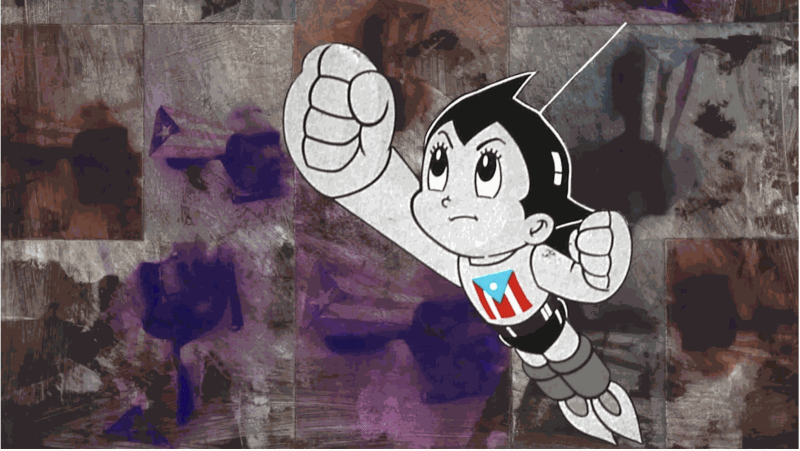Thank you to Adriana Zavala, Associate Professor of History of Art and Architecture and Associate Professor of Studies in Race, Colonialism, and Diaspora at Tufts University, for her thoughtful study of Juan Sánchez's UNKNOWN BORICUA STREAMING: A Nuyorican State of Mind (2011) in her article "Juan Sánchez’s Counter-Archive" in the Smithsonian American Art Museum's journal American Art.
Abstract: This essay examines the video work UNKNOWN BORICUA STREAMING: A Nuyorican State of Mind (2011) by the Brooklyn-born Nuyorican artist Juan Sánchez. The video is a digital collage that incorporates photographs of Puerto Rican migrants reposited in the archive of the Migration Division at the Center for Puerto Rican Studies at Hunter College (Centro de Estudios Puertorriqueños), along with materials mined from Sánchez’s own archive. The images are set against a flickering, multicolored grid and accompanied by a transnational soundtrack of musical and vocal clips. Given Sánchez’s fracturing of the grid, I interpret the video as a counter-archive that interrogates his community’s encounter, both stateside and in Puerto Rico, with U.S. neocolonialism. Moreover, as a Black “AmeRícan” (a concept borrowed from poet Tato Laviera), Sánchez’s collage renders visible how his community’s struggle is inexorably connected to other civil rights struggles in the United States, and to global human rights movements.
Abstract: This essay examines the video work UNKNOWN BORICUA STREAMING: A Nuyorican State of Mind (2011) by the Brooklyn-born Nuyorican artist Juan Sánchez. The video is a digital collage that incorporates photographs of Puerto Rican migrants reposited in the archive of the Migration Division at the Center for Puerto Rican Studies at Hunter College (Centro de Estudios Puertorriqueños), along with materials mined from Sánchez’s own archive. The images are set against a flickering, multicolored grid and accompanied by a transnational soundtrack of musical and vocal clips. Given Sánchez’s fracturing of the grid, I interpret the video as a counter-archive that interrogates his community’s encounter, both stateside and in Puerto Rico, with U.S. neocolonialism. Moreover, as a Black “AmeRícan” (a concept borrowed from poet Tato Laviera), Sánchez’s collage renders visible how his community’s struggle is inexorably connected to other civil rights struggles in the United States, and to global human rights movements.
AUGUST 9, 2023



